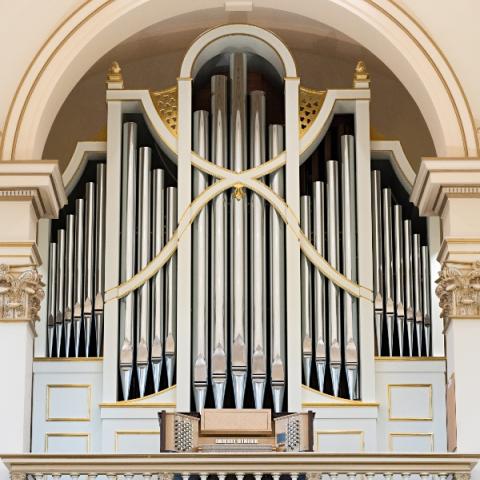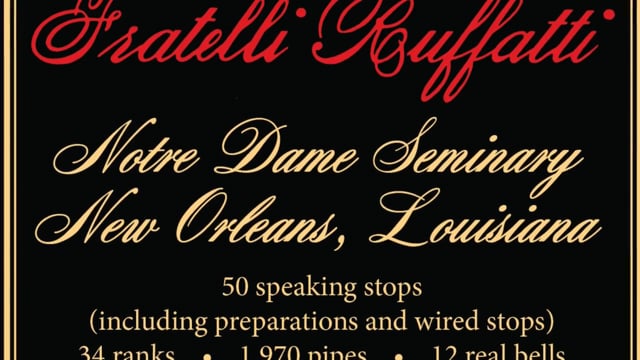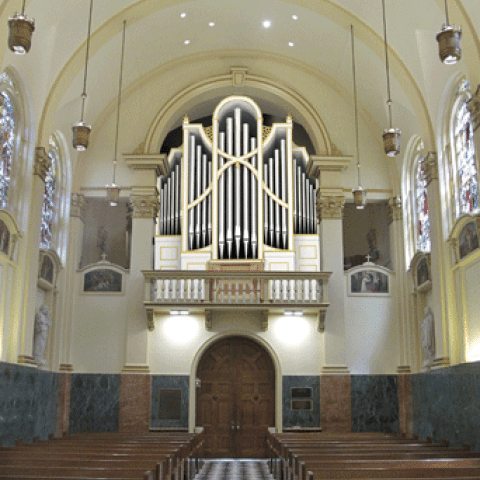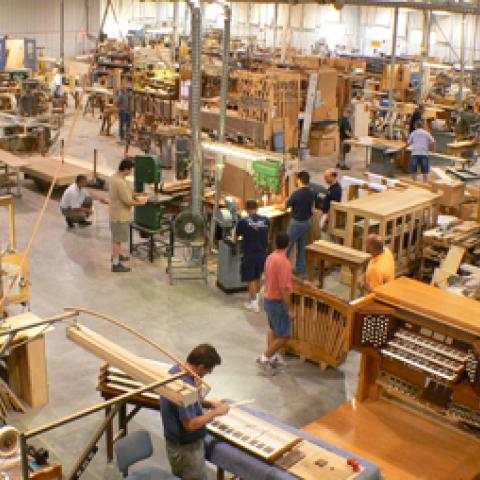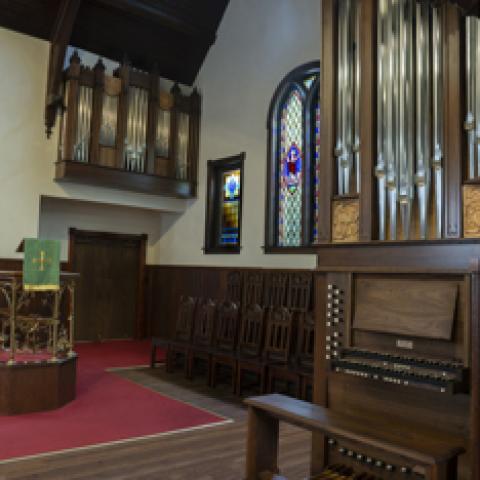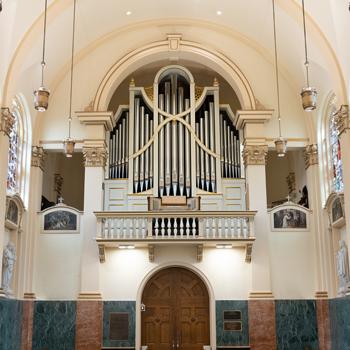
Fratelli Ruffatti has built a new organ for Notre Dame Seminary, New Orleans, Louisiana: two manuals and pedal; 50 speaking stops (including preparations and wired stops); 34 pipe ranks; 1,970 pipes and 12 real bells.
In spite of its relatively moderate size, it is designed to be more flexible than many of its three-manual counterparts. This is made possible primarily by the careful choice of stops and console controls. A notable feature is the division of the Grand-Orgue into two sections, unenclosed and enclosed. The first contains the principal chorus, based on a 16′ Principal, while the latter includes flutes, a Gemshorn with its Celeste, and a rather powerful reed. Each section of the Grand-Orgue is equipped with its own set of sub and super couplers and a Unison Off.
The console controls include a Grand-Orgue Enclosed to Expressif Transfer, which can separate the two Grand-Orgue sections in a single motion, canceling the stops drawn on the first manual and transferring them to the second. A further step toward the separation of the two Grand-Orgue sections is their separate set of couplers (at 8′ and 4′) to the Pedal.
The casework was stipulated to be of classical design, with the largest pipes in the façade. The case is divided into five bays, with the central bay capped by an arch, thus recalling the big central arch dividing the loft from the chapel. The side bays closest to the center have counter arches, which bring more emphasis to the central bay, while the bays to their sides are a natural conclusion to the organ case containing the smaller façade pipes.
Builder’s website: ruffatti.com
Seminary website: nds.edu
Cover photo by Steven Blackmon
Detail photos by Fratelli Ruffatti
The organ is featured on the cover of the October issue of The Diapason:
https://www.thediapason.com/content/cover-feature-ruffatti-notre-dame-seminary-new-orleans
Also see a video chronicle of the installation of the organ:
https://www.thediapason.com/videos/ruffatti-organ-notre-dame-seminary-new-orleans
Other organ builder news:

